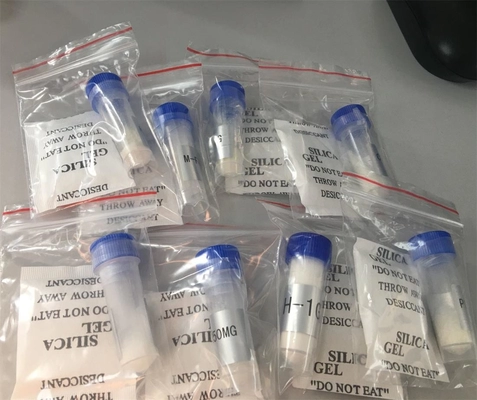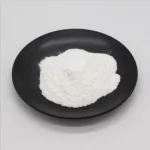Description
Research Chemical CAS 2023788-19-2 Gip \ GLP-1 Peptide Tirzepatide
Description
| Product Name: | Tirzepatide | CAS: | 2023788-19-2 |
|---|---|---|---|
| MOQ: | 1g | Shelf Life: | 1 Year |
| COA: | Available | ||
| High Light: |
CAS 2023788-19-2 Peptide Tirzepatide, GLP-1 Peptide Tirzepatide |
||
Research Chemical CAS 2023788-19-2 GipGLP-1 Peptide Tirzepatide
- Product description
- Tirzepatide is a dual glucose-dependent insulinotropic polypeptide (GIP) and GLP-1 agonist that has been studied recently as a treatment for patients with noncirrhotic NASH (SYNERGY-NASH, NCT04166773) given its association with significant weight loss and improvement in features of metabolic syndrome in diabetes trials.
The addition of GIP which anatagonizes the central effects of GLP-1 to cause nausea is designed to improve tolerability and also allow for more aggressive dosing with increased systemic exposure. A recent post-hoc analysis showed significantly decreased NASH-related biomarkers and increased adiponectin in patients with T2DM
The weight-reducing actions of the GIPR-GLP1R co-agonist tirzepatide
Considerable interest is focused on the mechanisms of action of tirzepatide, a highly effective GIPR-GLP1R co-agonist that produces superior reductions in HbA1c and body weight, relative to that achieved with 1 mg once weekly of semaglutide in people with T2D. The GIPR is expressed in multiple regions of the mouse and human brain, in subsets of neurons and glial cells, with some hypothalamic and hindbrain cells exhibiting co-expression of the GIPR and GLP1R. Chemogenetic activation of GIPR + cells in the mouse hypothalamus acutely reduced food intake; however, co-administration of exendin-4 did not produce an additive reduction of food intake when compared to either intervention alone.
Therapy with tirzepatide, 5–15 mg once weekly produces 8–12% body weight reduction in people with T2D, prompting ongoing development of tirzepatide as a weight loss agent for people with overweight or obesity. The importance of GIP for the weight loss properties of tirzepatide in humans is uncertain; however, tirzepatide failed to reduce body weight in Glp1r−/- mice, implicating a dominant role for the GLP1R in the weight loss observed with this agent. Glucose-dependent insulinotropic polypeptide (GIP) has been shown to reduce the extent of aversive responses induced by GLP-1 in mice and rats and decrease nausea and vomiting in the shrew.
However, whether these intriguing actions of GIP are conserved in humans remains unclear.







